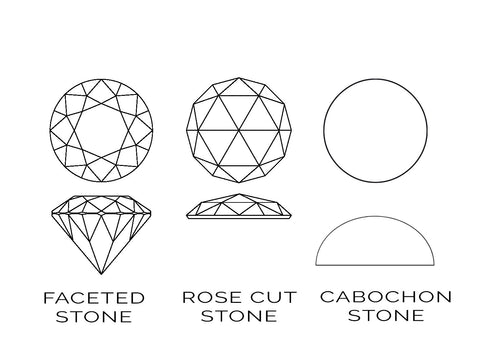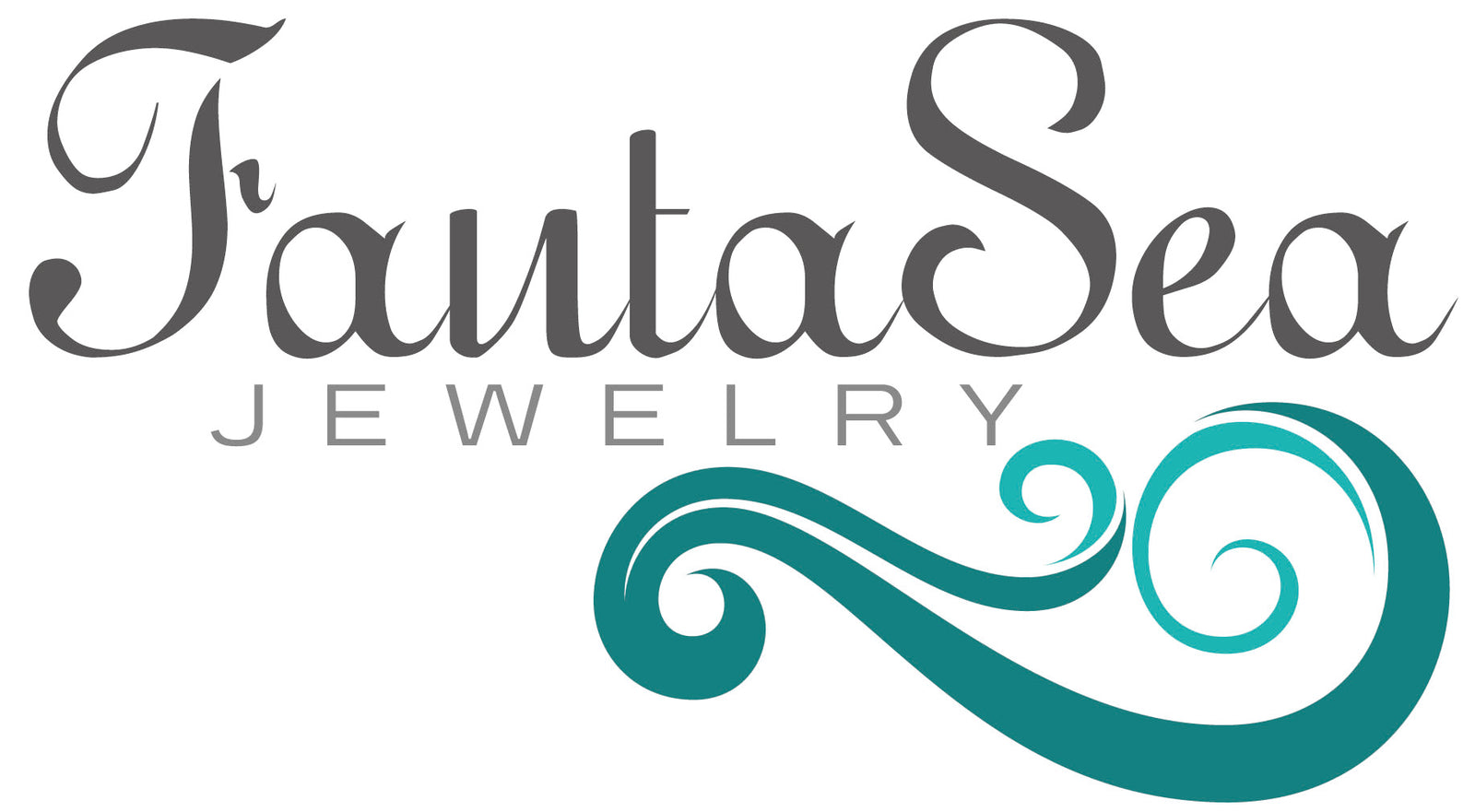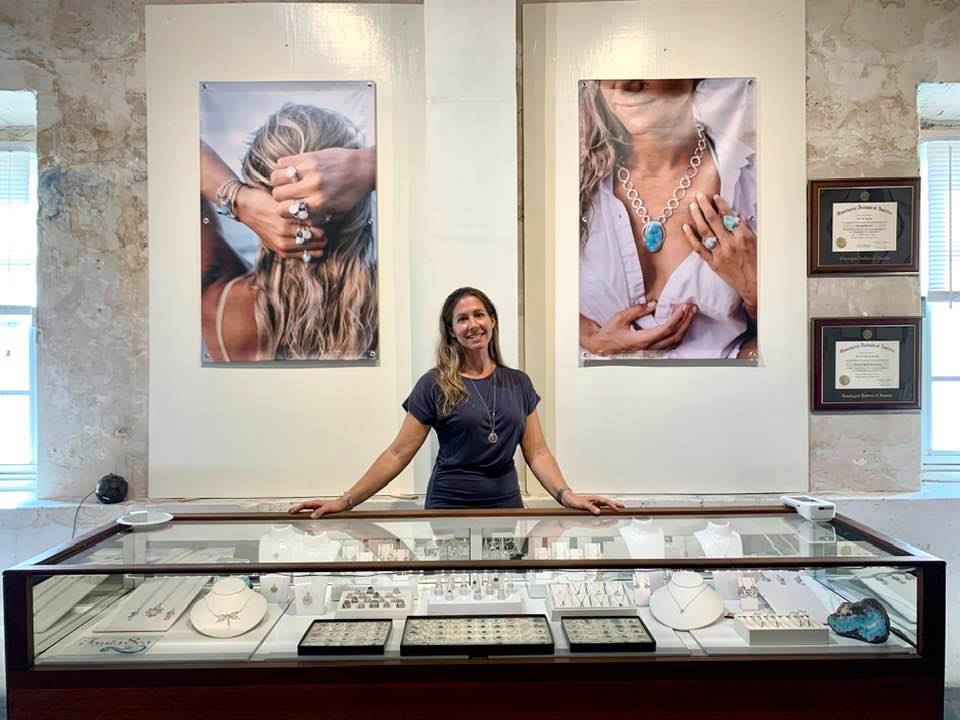What is a rose cut gemstone and what is a cabochon gemstone? You may have heard both of these terms used in jewelry. These refer to the cutting style of a polished gem. One of the 4 "C"s of diamond value: cut refers to not only the cutting style, but the cut quality as well, and just like in diamonds, colored stones are cut in many different ways.
Gem materials have been cut and polished for centuries. This is done to bring out the beauty of these minerals that are products of the earth, and allows them to be set into jewelry. The round brilliant cut is a classic choice for diamond solitaires, bridal jewelry and accent stones, and was developed in the early 1900's and later refined in 1919 by engineer Marcel Tolkowsky. This cutting style has been used for colored gemstones and diamonds for many years. Gemstone cutting and lapidary work is a true science, as it requires analyzing rough gem materials and deciding how to get both the best weight retention and beauty out of each one.

Anatomy of a diamond or faceted stone, 5 main parts: table, crown, pavilion, girdle and culet.
In modern jewelry these days, it is very common to see cabochon cut gemstones and rose cut gems in addition to “traditional” faceted ones. Here’s a quick crash course in the difference in these three types of gemstone cuts - all of which you will find throughout the FantaSea Jewelry collections.
- Faceted gemstones are cut like a diamond, often round as in a round brilliant cut gem. Faceted stones can also be oval, square, pear, marquise, emerald, cushion and many other fancy and modified versions of these. Faceted stones feature a deep pointed bottom (pavilion), with a top “crown” of facets on the top. The depth of the pavilion and the facets on the lower portion of the stone allow for the color and brilliance that shows through the top crown facets to create the beautiful brilliance that faceted stones are known for.
- Cabochon cut gemstones are usually smooth, domed forms with a flat bottom that display color, pattern or phenomena (asterism, adularescence, play of color, cat’s eye, etc…). Gemstones that display phenomena, such as moonstone, opal and star gems (sapphire, ruby, diopside, cat’s eye, etc…) are usually fashioned as a cabochon to allow the stone’s unique optical properties to come through. If not cut properly, the flash, star or eyes that these materials are known for will not display in the finished gem. Cabochon cutting is also used with opaque materials (turquoise, larimar, onyx) to showcase color and pattern. Translucent gem materials are also cabochon cut, and have a unique and different look when compared to faceted stones.
-
Rose cut gemstones are basically a combination of the two above, they are a faceted cabochon, with a flat bottom and faceted, domed top. Rose cut/ faceted cabs can be found in many different shapes, such a round, oval, pear, square, marquise and various freeform shapes as well.

Some gemstone material is cut into cabochons or rose cuts because it is not “facet quality”, which means that it doesn’t have the transparency to make a high quality faceted stone. This does not however mean that all gemstone cabochons are of poor quality, nor that lower quality gem material is never cut into faceted stones. Cabochons with high quality gem material are common and they offer a different look to that of a faceted stone. Cabochons tend to show off color and patterns well, and in some material, a transparent glow or luster.

I often talk about how much I love using gemstones that have more of an organic feel and look a bit more natural. Many rose cut colored gemstones and gemstone cabochons do exactly this, they express the natural beauty of the stone, rather than a “perfect” display symmetry and clarity. Of course, I have never met a gemstone that I didn’t like, so I have appreciation for all varieties and styles of colored gemstones and diamonds. Sometimes I use more “traditional” stones, like round brilliant cuts but there is something about the unique beauty of gemstone cabochons that has always drawn me in.
Do you have a preference? Do you prefer the more traditional look of a faceted gem? The smooth, classic look of a cabochon, or the more organic look of a rose cut?
Check out the latest rings with rose cut gems!






Leave a comment (all fields required)